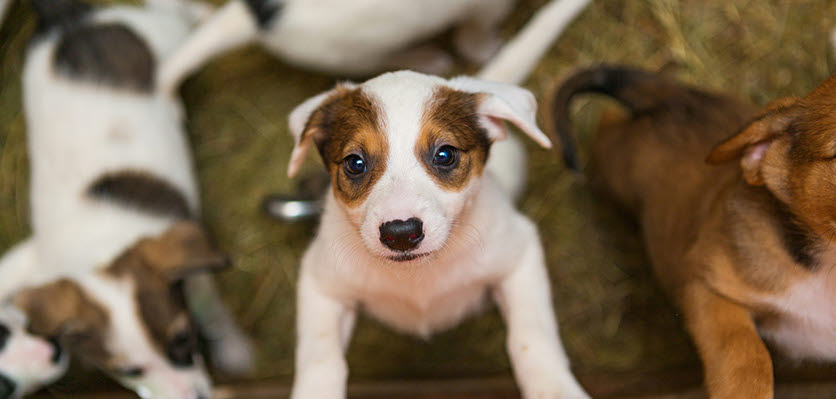Adopting a rescue: what you need to know

Our shelters are often filled with animals waiting to be adopted and brought into their new homes. When deciding on bringing a new pet into the family, many people will consider adopting a recue animal. Not only will this animal make a great addition to the family, but it is also providing the animal with a second chance in life. There are animals of all species, breeds and ages available for adoption and working with your shelter, rescue organisation and veterinarian will help match you with an animal best suited to your lifestyle and individual desires and needs.
Here are some things to consider before adopting a pet:
Species and breed
Researching the type of animal that is best suited for your personal situation is important to ensure the pet is the correct fit for your family. When we think of shelters, we often think of dogs and cats. But there are a wide variety of pets in our shelters waiting for adoption, such as rabbits, guinea pigs, birds and even farm animals! Once you have decided on the species you want to adopt, you then need to consider the type of breed that is best suited to you. If you are looking at getting a new dog or cat information can be found in the choosing a puppy or choosing a kitten article.
If you have a particular dog breed in mind that you would like to adopt, discussing this with your veterinarian is a great way to ensure you are aware of any future health risks that may be associated with that breed. Breeds with exaggerated physical features such as brachycephaly, short limbs and excessive skin wrinkling can cause particular health concerns. The AVA in conjunction with the RSPCA have created a joint initiative known as ‘Love is Blind’ to raise awareness of animal welfare problems associated with exaggerated traits. More information on this can be found on our Love is Blind page.
Health
Animals rehomed through shelters and rescue groups will be assessed by a veterinarian prior to becoming available for adoption. Some animals, particularly older individuals, may have some pre-existing health conditions prior to adoption. Being aware of the condition and any ongoing management that may be required is important to ensure you will be able to meet all your new pets needs once you bring them into your home. Even though they may have some health issues, it doesn’t mean they won’t be great pets, they’ll still to be able to provide unconditional love and affection and will be eternally grateful for the new lease on life you have provided them.
Most shelters and rescue groups will desex, vaccinate, worm and flea treat your new pet prior to rehoming them. It is then up to you to ensure that your pets vaccinations and parasite preventative measures are kept up to date. A visit with your regular veterinarian shortly after adoption will help ensure your new friend is well looked after.
Temperament
The temperament of your new pet, particularly dogs and cats, is another key factor to consider when selecting your new pet. When you visit the shelter, discuss your lifestyle, family situation (e.g have children or other pets) and traits you desire in a pet with the shelter staff and they will help match you with an appropriate individual.
Animals end up in shelters for a wide variety of reasons, sometimes it can be related to behavioural concerns their previous owners weren’t able to deal with. Taking the time and working with your new pet will help you work through any issues you may have. The AVA recommends reward-based training methods. For more details on training, check out our article here.
If you’re unsure about training your new friend or feel that you could be doing more, seeking out advice and assistance from veterinarians, behaviourists and trainers will be of great benefit for both you and your pet.
Integration with other pets
It is important to let the shelter know that you have other pets at home so they can match you with an appropriate individual. Unfortunately, not all animals enjoy company and wound much prefer to live a solitary life with their owners. For the wellbeing and safety of the potential adoptee, as well as that of your existing pets, animals should not be forced to live together if they are incompatible. On the contrary, some animals crave companionship and will flourish with other animals around. When introducing your new pet to existing ones it is important to integrate them slowly in a supervised manor. It is only once your animals are comfortable with each other for prolonged periods of time should you consider allowing them to be left alone together.
Now that you’ve considered all the factors when adopting a pet, it’s time to visit your local shelter or rescue group to find your newest addition to the family. Your forever pet will be there waiting for you to rescue them!
